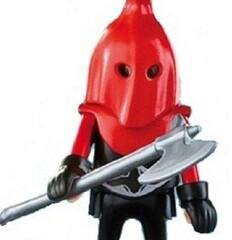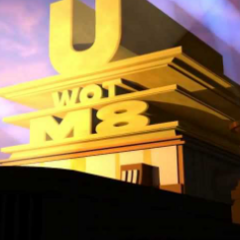-
Posts
1,295 -
Joined
-
Last visited
Awards
This user doesn't have any awards
About EasonIDontKnowAnything
- Birthday July 29
Profile Information
-
Gender
Male
-
Location
Malaysia
Recent Profile Visitors
EasonIDontKnowAnything's Achievements
-

BSOD, not sure how to resolve
EasonIDontKnowAnything replied to EasonIDontKnowAnything's topic in Troubleshooting
Oh well, yes I suppose I should clarify the pictures I posted above are the ones I managed to capture afterwards. I did get BSODs, I just didn't think to take any pictures. But thank you for the advice on the RAM, yes I'll make sure to keep that in mind if it does BSOD when I try a fresh installation. -

BSOD, not sure how to resolve
EasonIDontKnowAnything replied to EasonIDontKnowAnything's topic in Troubleshooting
Alrighty, thanks. If you don't mind my asking, what exactly is the problem that's causing the BSODs? ...also theoretically speaking how long can I postpone a clean install? Would there be any damage if I were to say...just continue using my PC the way it is? -

BSOD, not sure how to resolve
EasonIDontKnowAnything replied to EasonIDontKnowAnything's topic in Troubleshooting
I tried "Startup Repair" as one of the options in Windows System Recovery but it just said it couldn't repair my PC (refer to the topmost screenshot in the second reply). Unfortunately, fool that I am, I have nothing backed up. Never really bothered to since I never really had the disposable income to get another drive for that purpose, but I do back up a couple of important files in a cloud. Might be a stupid question, but since my OS is on my SSD and not my HDD, a fresh install shouldn't affect the files on the latter, correct? -

BSOD, not sure how to resolve
EasonIDontKnowAnything replied to EasonIDontKnowAnything's topic in Troubleshooting
-
OS - Windows 11 x64 Installed the OS less than half a year ago myself via USB Intel i5-9400F Zotac GTX 1070 ASUSTeK COMPUTER INC. PRIME B365M-A (LGA1151) MWE Bronze V2 550W Desktop I also feel like I should note that I've had about half a dozen (around that figure, anyway) blue screens in the five or so months I've had this PC. I perhaps stupidly never really paid much attention to them because they were spread out over a number of months and never happened successively (unlike today). https://drive.google.com/file/d/1gdDmb2EvDbJYTR3KjmMfMsyhNY1ts5Af/view?usp=sharing The link above leads to my dump files. Unfortunately, I'm not able to get the files from the "Resource and Performance Monitor". It's supposed to finish collecting data and generate a report in 60 seconds but it's running into the fifth minute now. However, I do have a screenshot of Windows' "Reliability Monitor", if that's any help.
-

ST2000DM008 SMR vs WD20EARZ CMR?
EasonIDontKnowAnything replied to EasonIDontKnowAnything's topic in Storage Devices
The difference in RPM not a big deal for you? -

ST2000DM008 SMR vs WD20EARZ CMR?
EasonIDontKnowAnything replied to EasonIDontKnowAnything's topic in Storage Devices
I only have a couple "modern" games. Insurgency Sandstorm and like Counter Strike 2. Otherwise I play some of the older Total War titles or Football Manager. -

ST2000DM008 SMR vs WD20EARZ CMR?
EasonIDontKnowAnything replied to EasonIDontKnowAnything's topic in Storage Devices
I can upgrade to an SSD, I'm just not inclined to. They're just way too expensive even if they are better. For reference, an 870 Evo 1TB is 70$ on Amazon. For someone working a full-time job on the lowest US minimum wage, that'd be about 5% of their salary. Locally the price of an 870 Evo 1TB would be anywhere between 20% to 30% of your salary. So yeah, there's a difference. What's a "clear" choice for some of you isn't so clear for others. On top of that, I'm still saving money for motorcycle gear and I have plenty of other necessary expenses to account for. -

ST2000DM008 SMR vs WD20EARZ CMR?
EasonIDontKnowAnything replied to EasonIDontKnowAnything's topic in Storage Devices
Faster in terms of RPM, I meant. Re SSDs becoming more affordable: they sure as heck aren't getting more affordable fast enough where I'm from! For example, the cheapest Samsung 870 EVO 2TB SSD I can find is still twice the price of a WD or Seagate 2TB HDDs, and HDDs are expensive enough as is here. -
Hello, hello, hello. Happy (belated) Halloween, folks. (TL;DR = Would it be better to get the Barracuda, which is an SMR drive but faster, or the WD Blue, which is a CMR drive but slower, for gaming and running programs (Photoshop, etc.)) Currently I'm running my OS and a couple important programs on a Kingston A2000 250GB NVMe drive and everything else on a Western Digital WD20EZAZ. The WD is an SMR drive and only 5,400RPM, which was fine when I bought it because I had really only planned on using this computer for browsing the web and storing files. I've narrowed down my choices to either a Seagate Barracuda 2TB SMR drive rated at 7,200RPM or a WD Blue 2TB CMR drive rated at 5,400RPM. I can't find any sellers who have the WD20EZBX (SMR, 7,200RPM) in stock or afford better drives (Barracuda Pro, etc., much too pricey where I'm from). So the question is just this, would it be better for me to get the Barracuda, which is an SMR drive but faster, or the WD Blue, which is a CMR drive but slower? I'd be running games, of course, as well as a couple programs like Photoshop. Thanks to anyone who takes the time to answer.
-

BOOTMGR is missing
EasonIDontKnowAnything replied to EasonIDontKnowAnything's topic in Troubleshooting
Sorry for bothering you again but I still need a bit of help, if possible? Don't know who else to ask and I'm not too sure about making a new post. I tried the command prompt shown on the page but it didn't work. It still says that the boot manager is missing when I unplug the old HDD. I did a little bit more searching and came across this thread from someone who had a similar problem as me, but unfortunately I don't really understand the answer all that much... Do I need to partition my SSD for this to work or something? -

BOOTMGR is missing
EasonIDontKnowAnything replied to EasonIDontKnowAnything's topic in Troubleshooting
-

BOOTMGR is missing
EasonIDontKnowAnything replied to EasonIDontKnowAnything's topic in Troubleshooting
I hope that's the only issue. So, um, how do I install the boot manager on my SSD? Thanks. -

BOOTMGR is missing
EasonIDontKnowAnything replied to EasonIDontKnowAnything's topic in Troubleshooting
-
Hey guys. So I'm using a SSD as my boot drive with Windows 7 on it and a HDD for my storage. The new HDD I just ordered to replace the old one arrived today and I promptly plugged it into my computer. However, when I try to boot my PC, it shows "BOOTMGR is missing". I've made sure that the SSD is my boot device in the bios (you can refer to the picture) and it was working just fine yesterday, so I'm pretty puzzled about what the problem could be. Help would be appreciated :)











.png)



